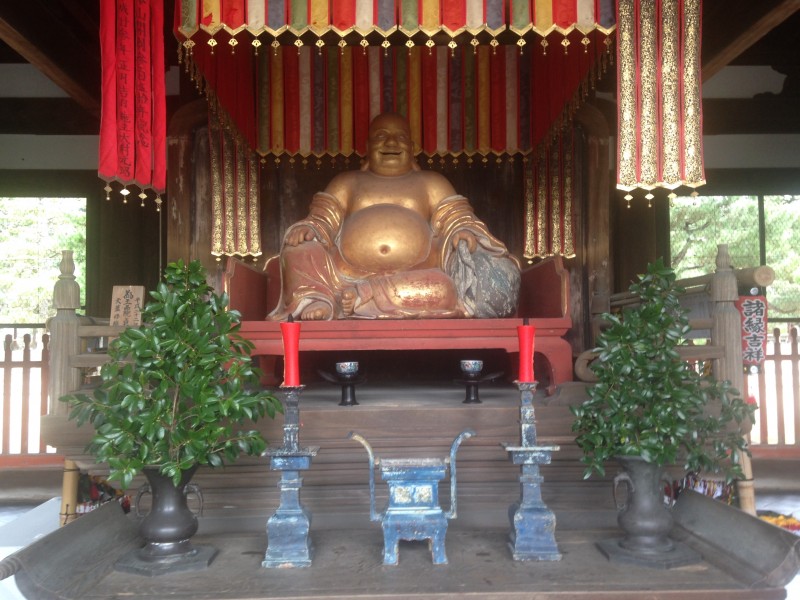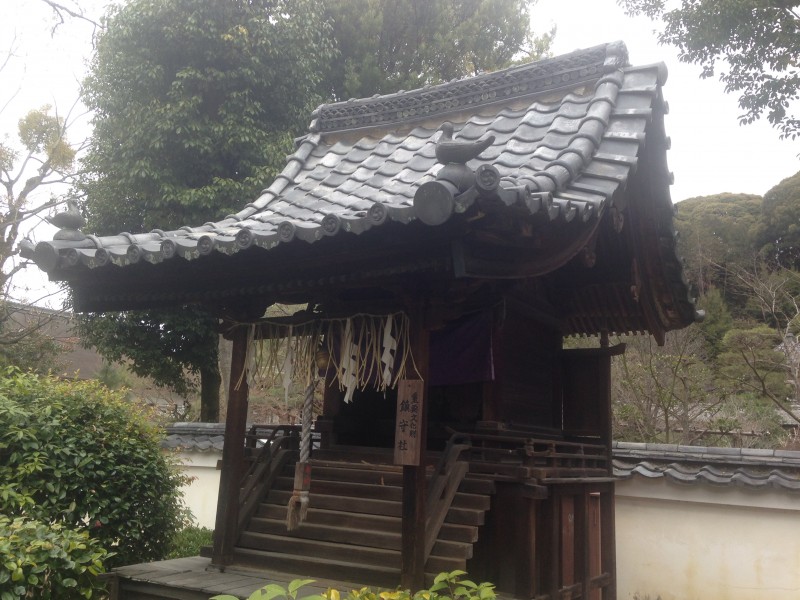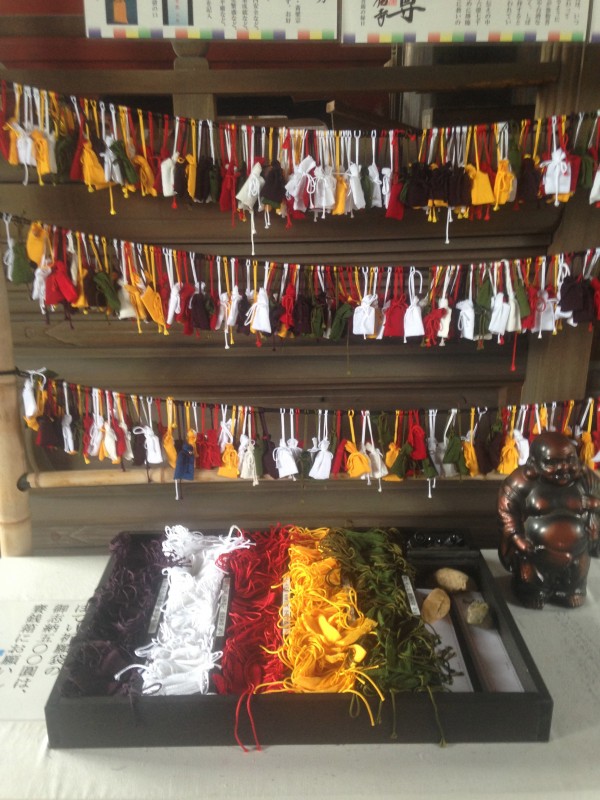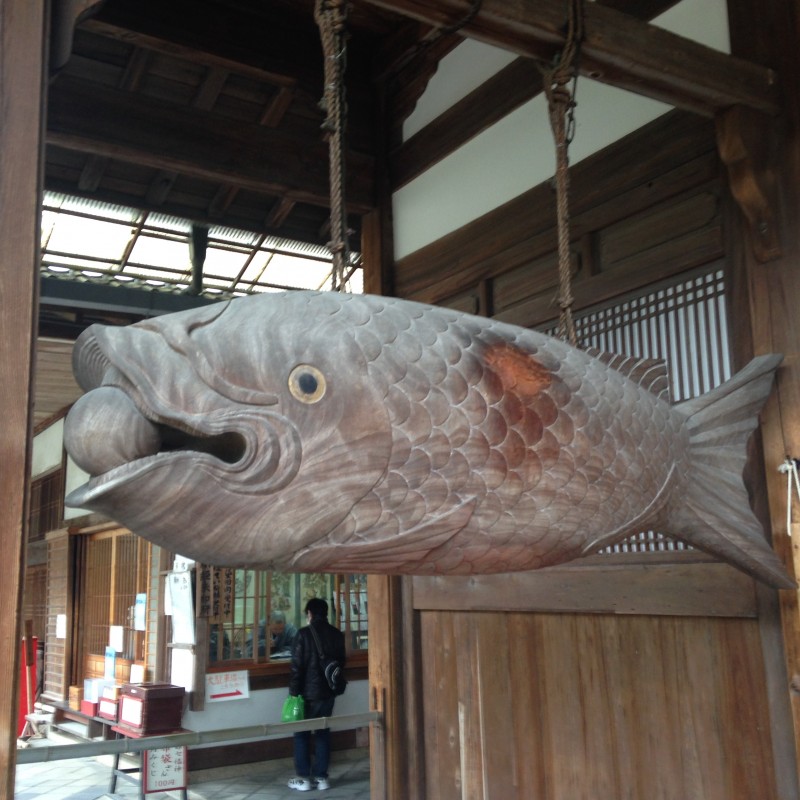
Hotei san, one of the temple’s main deities and a manifestation of Amida
Manpuku-ji is possibly the most striking Zen temple in Japan, because it looks so Chinese. The architecture is different, the clothing different, the statues radically different from the Japanese norm. Established in 1661 by a Chinese immigrant named Ingen, it’s retained a Chinese Ming character into the present day.

The small Hachiman-gu that protects Manpuku-ji. Note the doves on the corners of the roof, the messengers of the kami.
Ingen was invited by the Chinese community in Nagasaki during the so-called Age of Isolation, with the support of Zen priests in Japan. The 65 year old Chinese monk came with twenty disciples and a group of craftsmen. The temple he set up with backing from the Tokugawa was at Uji, just outside Kyoto, where he established a new type of Zen, somewhat different from Rinzai and Soto. It had elements of Pure Land belief, as well as keeping to Chinese style in its sutra chanting and clothing.
Shortly after the foundation of the temple a protective shrine (chinju sha) was added, which derived from the large Iwashimizu Hachiman shrine not far away. Interestingly, Hachiman is known as a guardian deity of Japan, so the immigrant Ingen was very much adapting to local practice in accepting the tutelary kami.

Hotei bags bearing prayers come in five different colours
Interestingly, one of the main deities at the temple is Hotei, the potbellied member of the Seven Lucky Gods and the only one to be based on a real person, it is said. (He was modelled after a rotund and happy Chinese monk.) At the base of the statue are five ‘Hotei bags’, the idea being that you write down a wish, place it inside the bag, and hang it up like an ema. The colours are based on the five elements:
Black – water. Cures illness.
White – metal. Good for business.
Red – fire. Love and academic success.
Yellow – earth. Traffic and home safety.
Green – trees. Health and longevity.
The prayers to Hotei echo Shinto practice, as do the Daruma omikuji (fortune slips) and a water basin shaped like a lotus flower. The theme of purity in Zen, a common point with Shinto, was taken up in a notice explaining the giant fish that hung before the dining hall. In Zen temples the wooden fish is struck at times of meals, and a notice at Manpuku-ji explained the practice as stemming from the ever-wakeful nature of fish, which never close their eyes. Being immersed in water, they are already pure but nonetheless it is spitting out a ball, representative of getting rid of world attachment (bonno) in order to keep a pure heart.

Fish is a symbol of purity, and this one is about to spit out a ball from its mouth representing worldly attachment. The fish is used as a gong for meal times, and you can see clearly where it gets struck.

Fascinating John. A visit to this temple is definitely now on my list.
Yes, I don’t think you’ll be disappointed. And while in Uji, it’s definitely worth going to the Soto Zen temple of Koshoji too. It’s a wonderful spiritual space, but totally overlooked by the throngs of people who head for Byodo-in. Even those who make their way up the other side of the river often head for Uji and Ujigami Jinja, unaware that a little further is Kosho-ji…